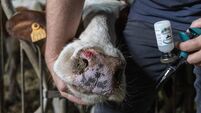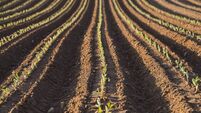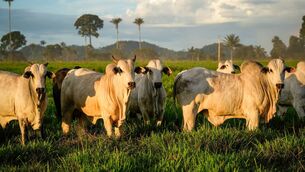Set targets to grow cattle on grass efficiently
Grazing represents a huge opportunity to achieve gain very cheaply and reduce overall production costs.
For these gains to be made, it is essential that appropriate quality grass is provided to growing stock at all times.
This is easier said than done, as grass can be difficult to manage once it is growing at high levels.
Many plan to take first cut silage over the next month, and once it is in the pit, you have determined the quality of the base feed that you will feed for all of next winter.
The quality of what is in the pit will be determined by your sward quality, fertiliser application, weed control, soil fertility and cutting date, etc.
Steers and heifers to be finished once indoors in October or November need to be at a suitable weight for finishing when entering the shed.
You should aim to achieve optimum weight gains between now and housing.
Those gains will be determined by sex, breed, age, grass quality, parasite control and weather conditions.
Make sure you take control of the factors where your management has an influence — namely grass quality and parasite control.
Target daily live weight gains of between 0.8 kg and 1.2+ kg per head per day for steers, and 0.8-1.0 kg for heifers.
If grass quality is poor, then you need to address it quickly, or it will be poor for the rest of the season. Beef animals of all types will consume approximately 2% of their body weight in dry matter each day. Poor quality grass will depress intakes significantly.
¦ Weanlings or stores on grazed grass will in many cases no longer need supplementation, as long as grass quality is kept right. If you try to get these animals to graze covers that are too strong, you will not achieve target weight gains, as total energy intake will not suffice.
¦ It is essential to offer young growing stock fresh grass on a regular basis. This will ideally mean using a paddock system or strip grazing with a back fence. In set stocking, animals will continue to graze re-growths and the rest of the sward will deteriorate, if the stocking rate is low.
¦ Take out strong paddocks or fields sooner rather than later. The quicker you take them out for silage, the quicker they will be back in your rotation.
¦ If your grass quality is poor, and perhaps you are also short of grass, then in order to achieve target weight gains, you may well need to feed meal. If you don’t feed them during a period of energy deficit, it will be very hard for the cattle to catch up to target weights.
It is also essential to get parasite control right. Get advice from an animal health expert. The control plan should be based on the history of the farm and land type. If you also have evidence of infestation based on recent slaughter record, don’t ignore it.
Where you have animals of varying size, weight, sex and age, but intend on feeding them the same once indoors, then you should consider splitting them. You can then push the lighter ones with some concentrates, so the group will be more even at housing. There is no point in putting animals that are too small to finish on a finishing diet.
It should never be an accident of good fortune that your cattle enter the shed in good order. If the grass is wrong, strive to get it right, and if the weather is wrong, and cattle can’t eat enough grass, then supplement it.










